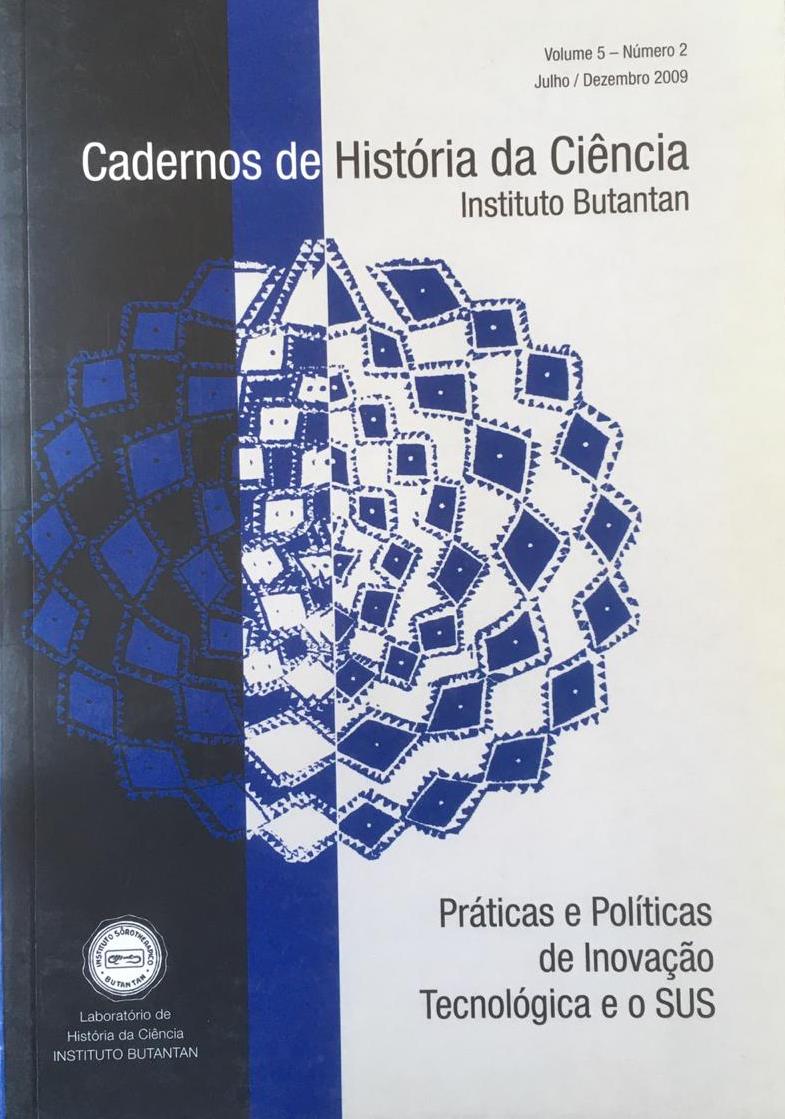Resumo
Este artigo descreve como, nos últimos 50 anos, evoluíram os paradigmas científicos que originaram o desenvolvimento racional de novos medicamentos para terapia do câncer, até chegar aos atuais monoclonais. Além disso, o artigo mostra sumariamente como nasceu e foi implantado o Projeto CAT/CEPID, cuja experiência ajuda na resposta à questão: pode o Instituto Butantan seguir com sucesso o caminho biotecnológico de toxinas naturais a novos fármacos? O texto foi preparado com base na apresentação realizada no Seminário – Práticas e Políticas de Inovação Tecnológica para a Consolidação do SUS, realizado em 22 de setembro de 2009 no Instituto Butantan, em São Paulo.
Referências
Armelin, HA. Pituitary extracts and steroid hormones in the control of 3T3 cell growth. Proc Natl Acad Sci. U S A, 1973; 70(9):2702-2706.
Carpenter, G., Cohen, S. Epidermal growth factor. Annu Rev Biochem. 1979; 48: 193-216.
Citri, A., Yarden, Y. EGF-ERBB signalling: towards the systems level. Nat Rev Mol Cell Biol. 2006; 7(7): 505-516.
Cohen, S. Isolation of a mouse submaxillary gland protein accelerating incisor eruption and eyelid opening in the new-born animal. J Biol Chem. 1962; 237: 1555-1562.
Cohen, S. Epidermal Growth Factor. Nobel Lecture. 8 december, 1986.
Harries, M., Smith, I. The development and clinical use of trastuzumab (Herceptin) Endocrine-Related Cancer. 2002; 9: 75-85.
Heilderger, C. et al Fluorinated pyrimidines, a new class of tumour-inhibitory compounds. Nature. 1957; 179: 663-666.
King, A., Selack, M.A., Gottlieb, E. Succinate dehydrogenase and fumarate hydrase: linking mitochondrial disfunction and cancer. Oncogene. 2006; 25: 4675-4682.
Masul, H., Kawamoto, T., Sato, JD. Wolf, B., Sato, G., Mendelsohn, J. Growth Inhibition of Human Tumor Cells in Athymic Mice by Anti-Epidermal Growth Factor Receptor Monoclonal Antibodies. Cancer Res. 1984; 44: 1002-1007.
Mendelsohn, J. EGF receptors as a target for cancer therapy Transactions of the American Clinical and Climatological Association. 2004; 11: 249-255.
Nordenskjold, B., Skoog, L., Brown, N., Reichard, P., Deoxyribonucleotide Pools and Deoxyribonucleic Acid Synthesis in Cultured Mouse Embryo Cells. J Biol Chem. 1970; 245: 5360-5368.
Nordlund, P., Reichard, P. Ribonucleotide Reductases Annu. Rev. Biochem. 2006; 75: 681-706.
Savage, CR Jr., Hash, JH., Cohen, S. Epidermal growth factor. Location of disulfide bonds. J Biol Chem. 1973; 248(22): 7669-7672.
Valabrega, G., Montemurro, F., Aglietta, M. Trastuzumab: mechanism of action, resistance andfuture perspectives in HER2-overexpressing breast cancer. Annals of Oncology, January 17, 2007
Carpenter, G., Cohen, S. Epidermal growth factor. Annu Rev Biochem. 1979; 48: 193-216.
Citri, A., Yarden, Y. EGF-ERBB signalling: towards the systems level. Nat Rev Mol Cell Biol. 2006; 7(7): 505-516.
Cohen, S. Isolation of a mouse submaxillary gland protein accelerating incisor eruption and eyelid opening in the new-born animal. J Biol Chem. 1962; 237: 1555-1562.
Cohen, S. Epidermal Growth Factor. Nobel Lecture. 8 december, 1986.
Harries, M., Smith, I. The development and clinical use of trastuzumab (Herceptin) Endocrine-Related Cancer. 2002; 9: 75-85.
Heilderger, C. et al Fluorinated pyrimidines, a new class of tumour-inhibitory compounds. Nature. 1957; 179: 663-666.
King, A., Selack, M.A., Gottlieb, E. Succinate dehydrogenase and fumarate hydrase: linking mitochondrial disfunction and cancer. Oncogene. 2006; 25: 4675-4682.
Masul, H., Kawamoto, T., Sato, JD. Wolf, B., Sato, G., Mendelsohn, J. Growth Inhibition of Human Tumor Cells in Athymic Mice by Anti-Epidermal Growth Factor Receptor Monoclonal Antibodies. Cancer Res. 1984; 44: 1002-1007.
Mendelsohn, J. EGF receptors as a target for cancer therapy Transactions of the American Clinical and Climatological Association. 2004; 11: 249-255.
Nordenskjold, B., Skoog, L., Brown, N., Reichard, P., Deoxyribonucleotide Pools and Deoxyribonucleic Acid Synthesis in Cultured Mouse Embryo Cells. J Biol Chem. 1970; 245: 5360-5368.
Nordlund, P., Reichard, P. Ribonucleotide Reductases Annu. Rev. Biochem. 2006; 75: 681-706.
Savage, CR Jr., Hash, JH., Cohen, S. Epidermal growth factor. Location of disulfide bonds. J Biol Chem. 1973; 248(22): 7669-7672.
Valabrega, G., Montemurro, F., Aglietta, M. Trastuzumab: mechanism of action, resistance andfuture perspectives in HER2-overexpressing breast cancer. Annals of Oncology, January 17, 2007
Downloads
Não há dados estatísticos.
Métricas
Carregando Métricas ...
